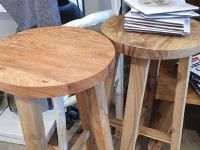A Guide to Growing Lotuses
A 5 minute read by Peter Worsp
To start:
Choose a solid round container for Lotus. Aesthetically, Lotus look better in a confined space and round containers allow the runners to grow without getting jammed in square corners. The water lily baskets are NOT suitable for Lotus plants as the holes in the baskets allow the Lotus runners to expand outside the basket.
Lotuses prefer a soft soil so that runners can freely spread. We sell our own blend of aquatic soil that is versatile for Lotus, water lily and aquatic plants. The clay loam soil is lump free and blended with sand for excellent results.
AVOID using potting mixes and soil with peat or pumice as these contain light materials that will float away. Make sure that the soil does not contain any extra nutrients, osmocote or fertilisers as they leach into the water and will stimulate algae.
Feeding:
Fertilise with Glenbogal Aquatic Spikes for seasonal fertilising or regularly with Glenbogal Aquatic Tablets (2-3 weeks) during the growing season. When fertilising with tablets ensure you make a hole with your finger first then push the spike or tablet in next. Pushing tablets directly into the soil may cause damage to runners or tubers. Damage to runners or tubers can cause rot and your Lotus may die.
Lotus can be grown in a main pond, a separate small pond or self contained in decorative containers for the patio or deck. Full sun and shelter from the wind is required. Water over the pot or soil in the container should be at least 5cm deep. The hotter the water the better the growth of the Lotus - the deeper the container the cooler the water and this can restrict the results from your Lotus. If growing in the pond, be sure the runners do not escape the container and invade the pond. They can overwhelm othe pond plants. With some varieties, it can, it can take several years for them to bloom, this can also sbe dependant on your location and fertilising.
For the best results from your Lotus, place your pond/self contained pot in a wind free environment in full sun. Heat provides stimulation in foliage and blooms. Lotus will go dormant over winter.
Avoid:
Cutting old or wilting leaves off under the water line. Water may track down the stem and cause tuber rot.
Repotting your Lotus tubers:
The tuber should be firm and have a healthy growing tip. Be very careful not to damage the tips as they are quite fragile and critical to growing the plant.
Lotuses are gross feeders and we suggest a layering of soils when planting. Start with a low nutrient aquatic soil then a layer of compostand required dosage of our Glenbogal Aquatic Spikes - for a full season of fertilising. A good layer of kow nutrient aquatic soil should be added over compost to keep the nutrience from leaching. Place your Lotus tubers in the centre of the container and any runners should be arranged around the container allowing new growth to follow the perimeter.
Cover with Soil and light stones (stones over top prevent fish from burrowing into the soil and loosening the planted tubers). Place in full sun with wind protection.
Gardeners note: Your first year of growth may not produce any flowers but the foliage is spectacular.




